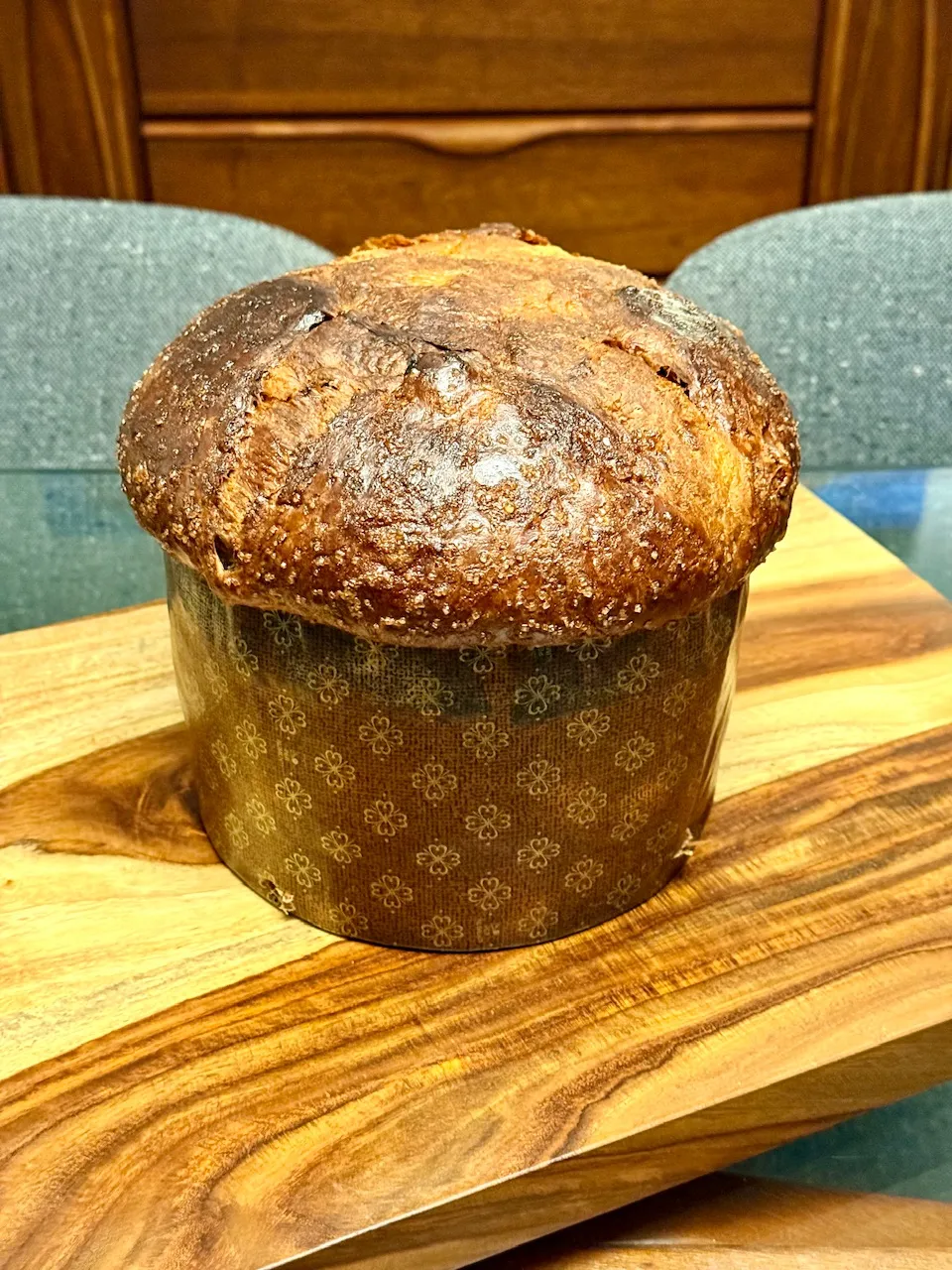
The weather has finally cooled off a bit, enough for another attempt at Giorilli Panettone. I also finally have some free time for the planning and baking now that I am between locum duties and trips. I have my fingers crossed for this one. I’m not sure if it will make a difference or not, but I had been skipping one of the steps of the shaping. There is an extra shaping and tightening step right after an uncovered rest on the countertop that I wasn’t doing. I have my doubts that it will make a difference but we’ll see. It is incredible that in the time it takes to snap a quick photo immediately before turning the panettone upside down, it does deflate a bit. We’ll see if hanging upside down might allow it to regain some of its glory, I’m doubtful.
For this panettone I have used homemade candied orange peel, dried tart cherries and golden raisins. The aromatic mix is wildflower honey, vanilla, orange and lemon zest.
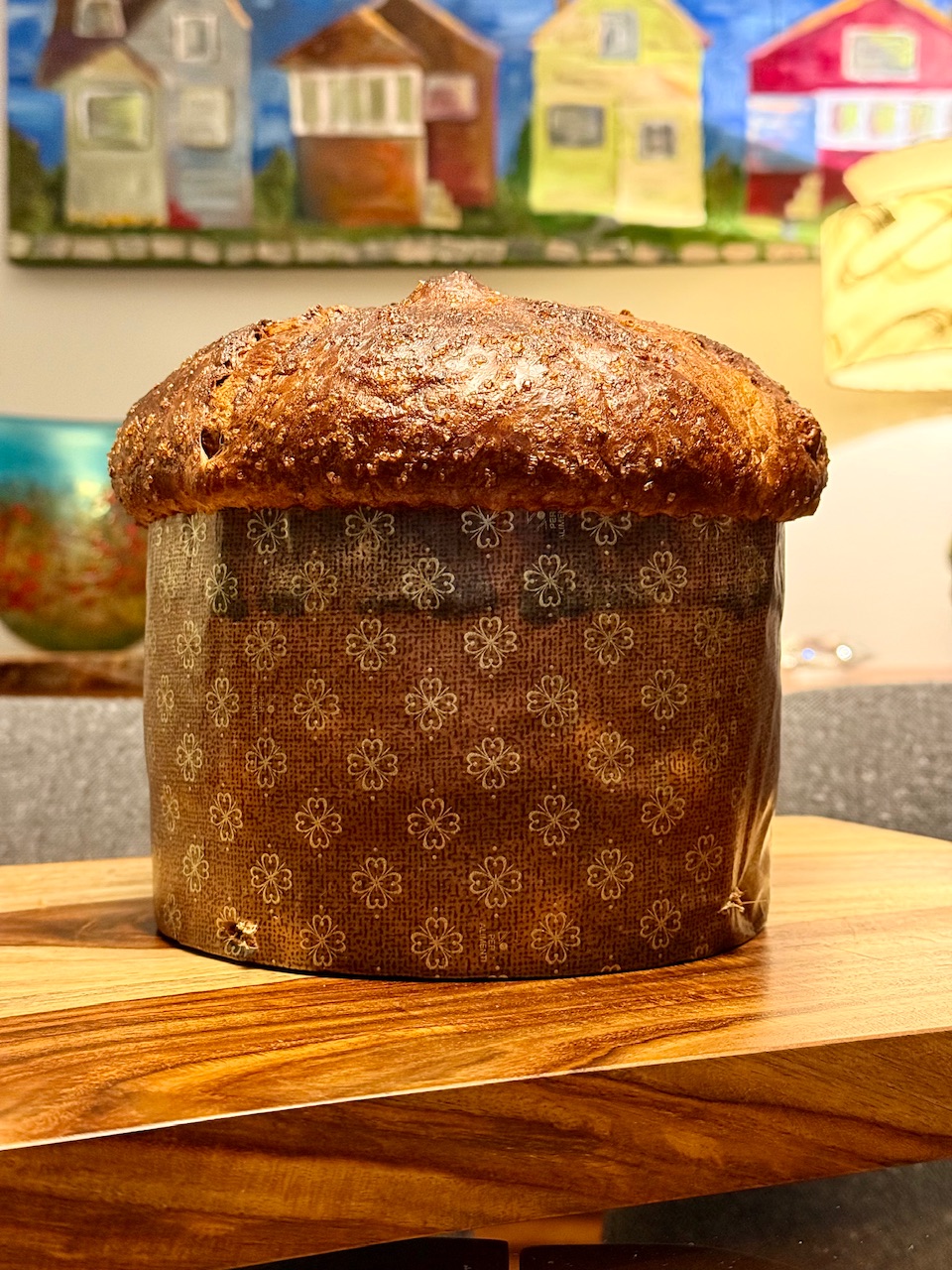
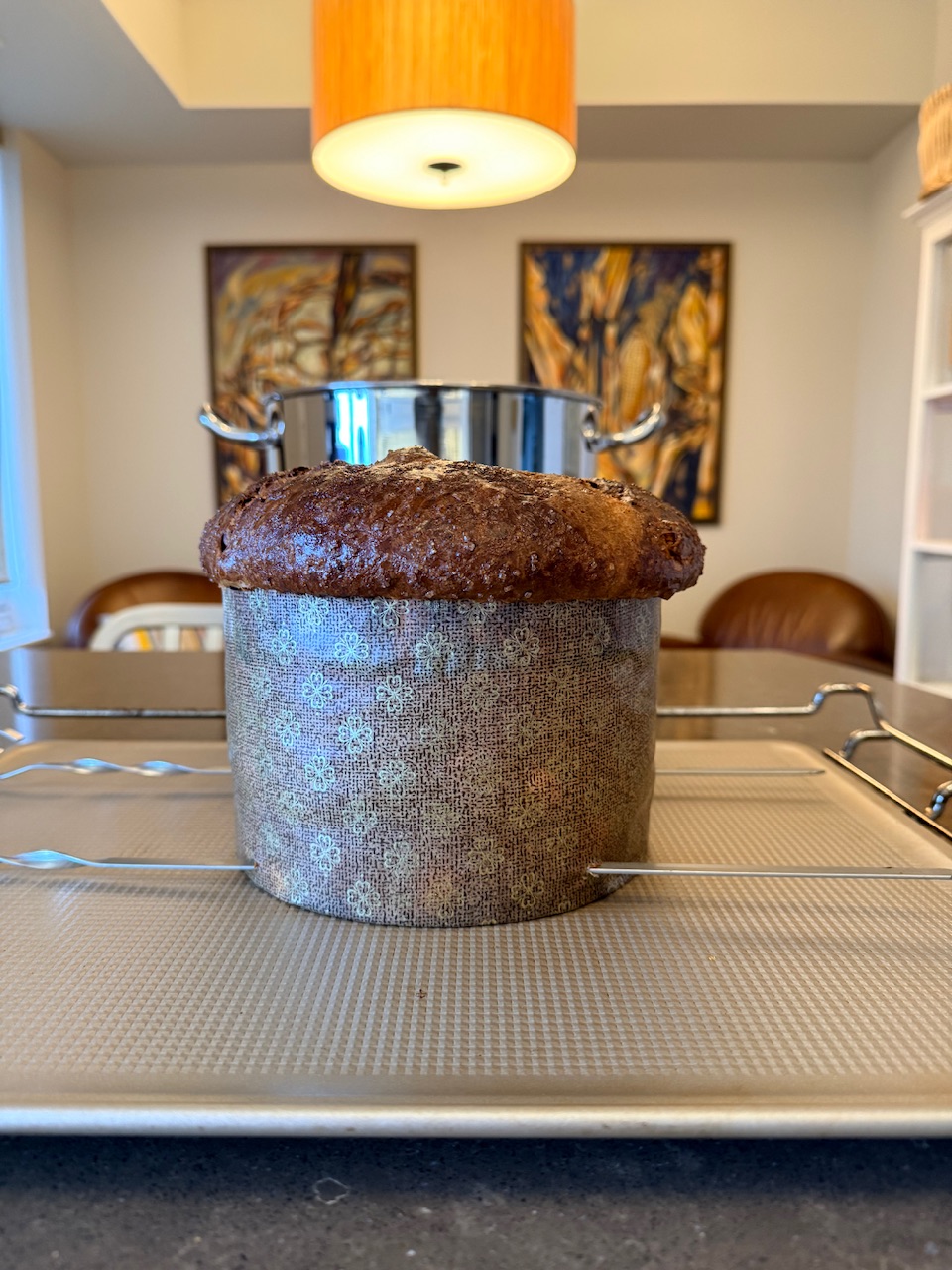
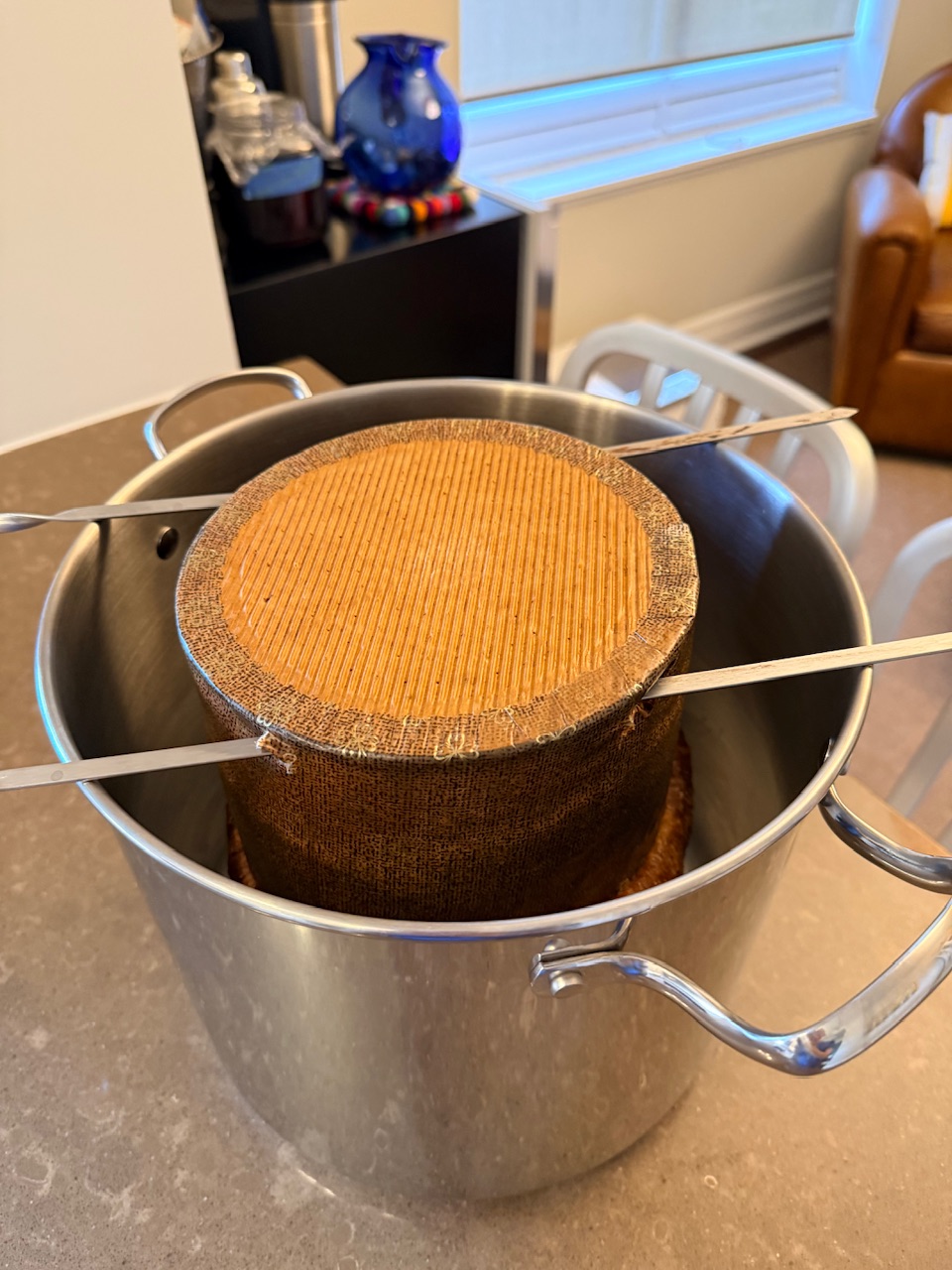
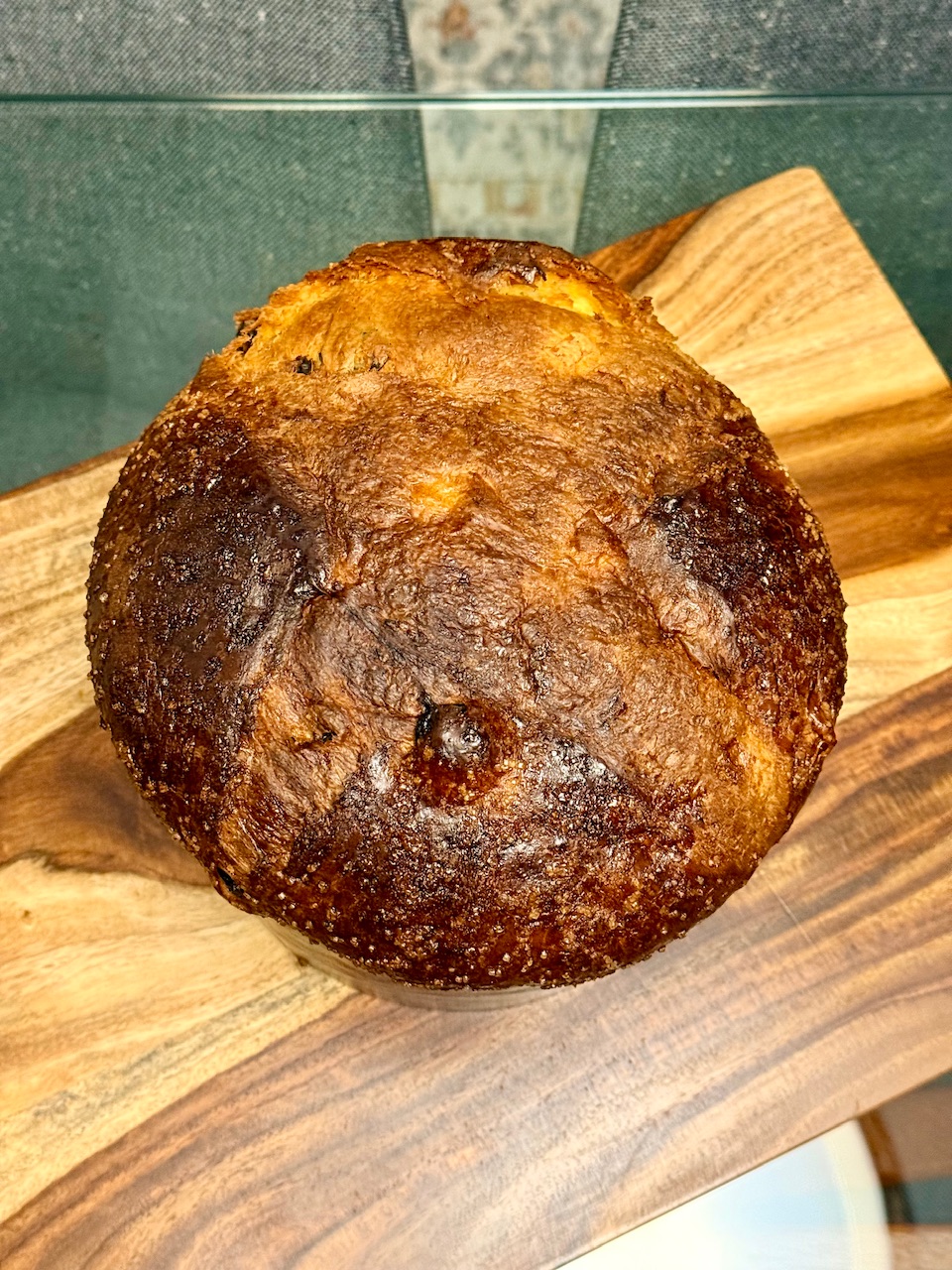
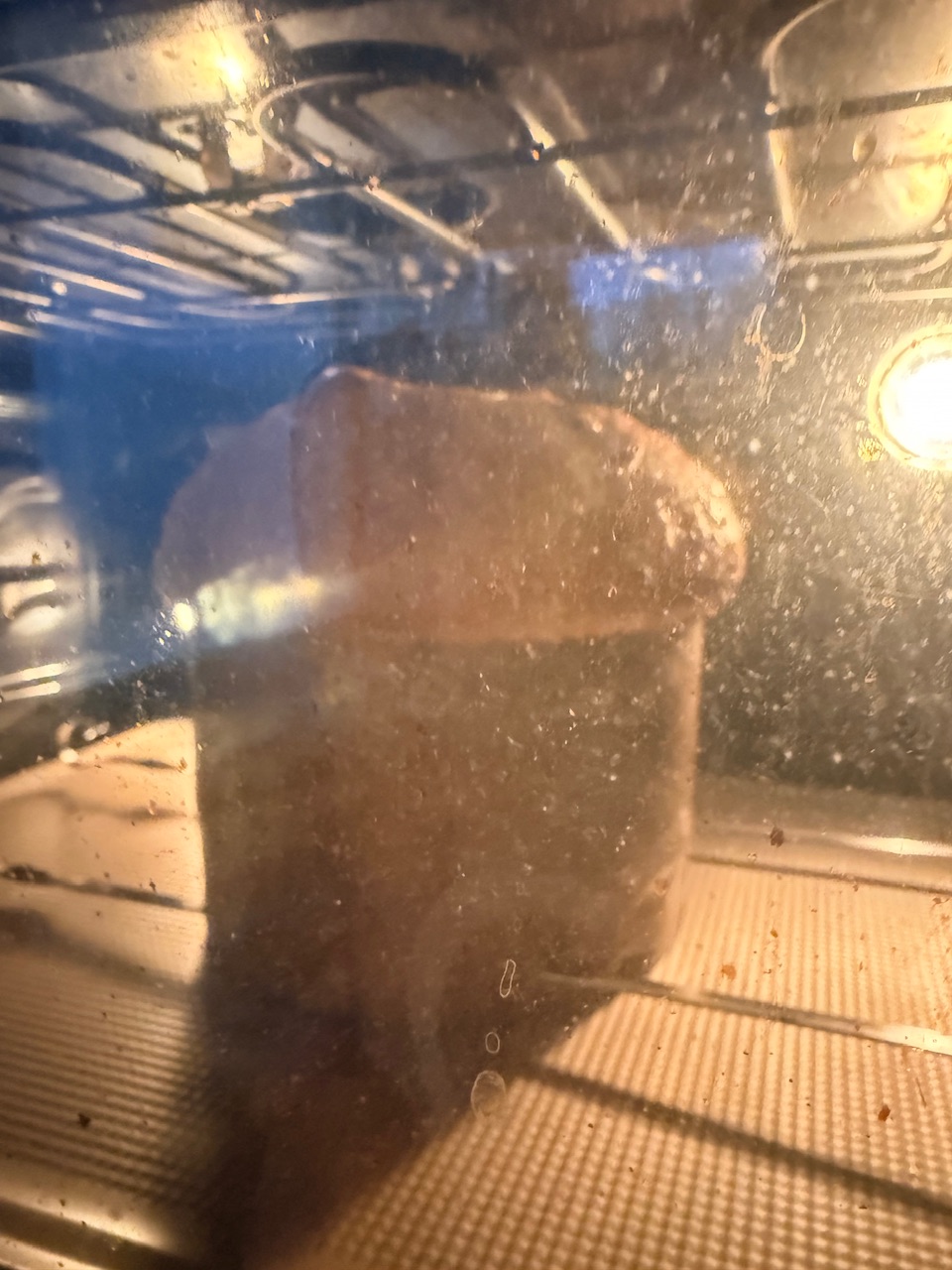
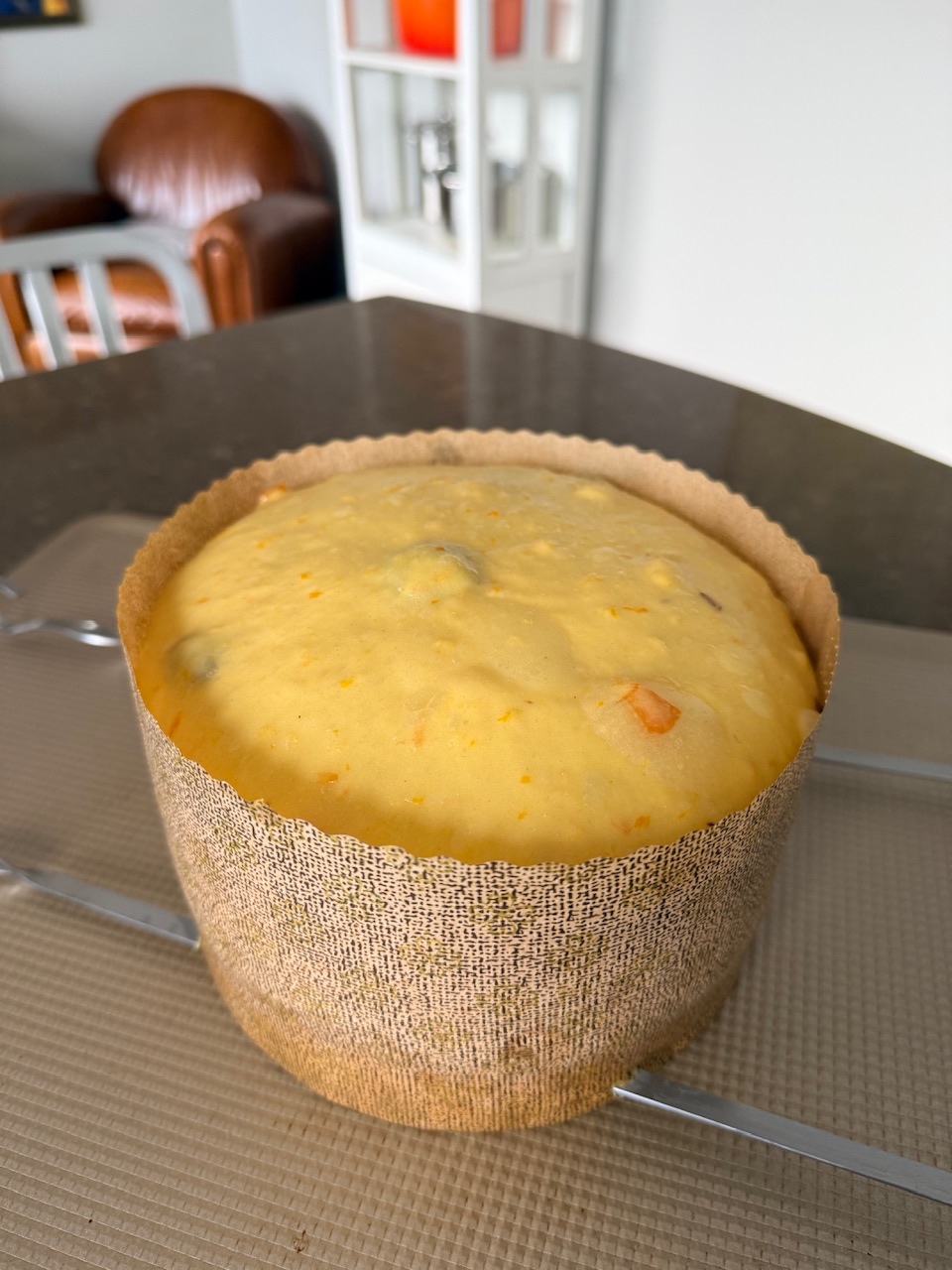
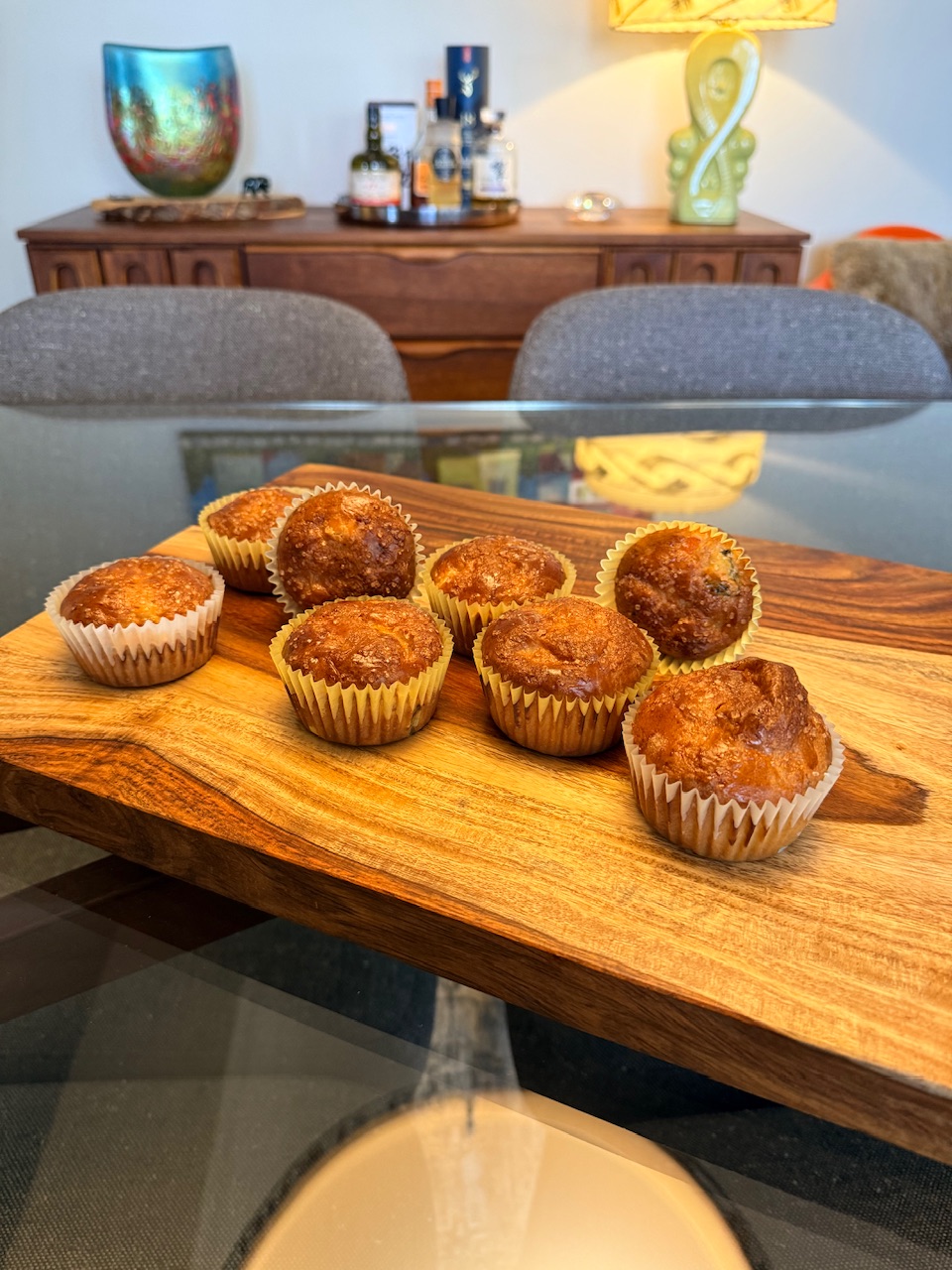
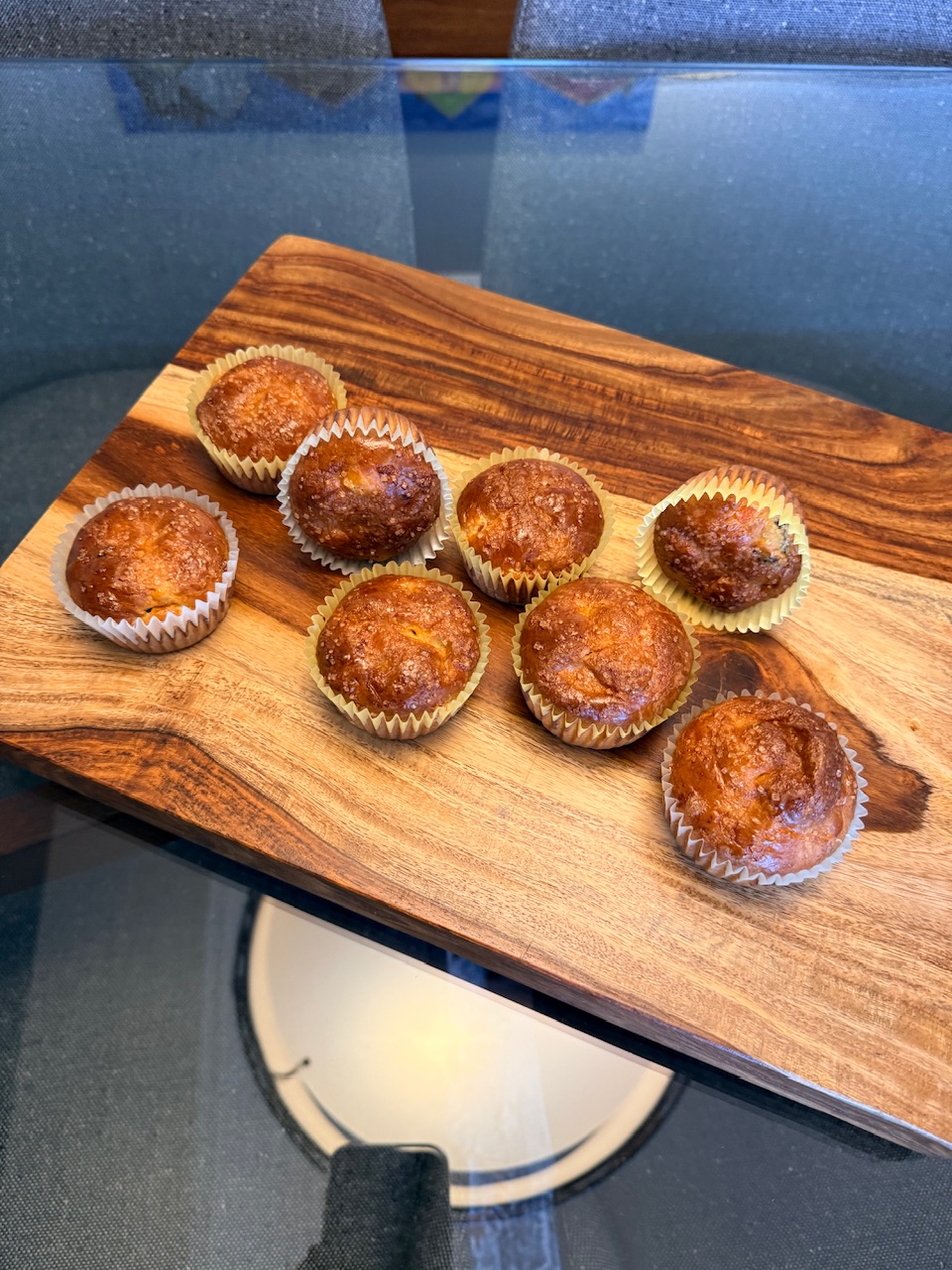
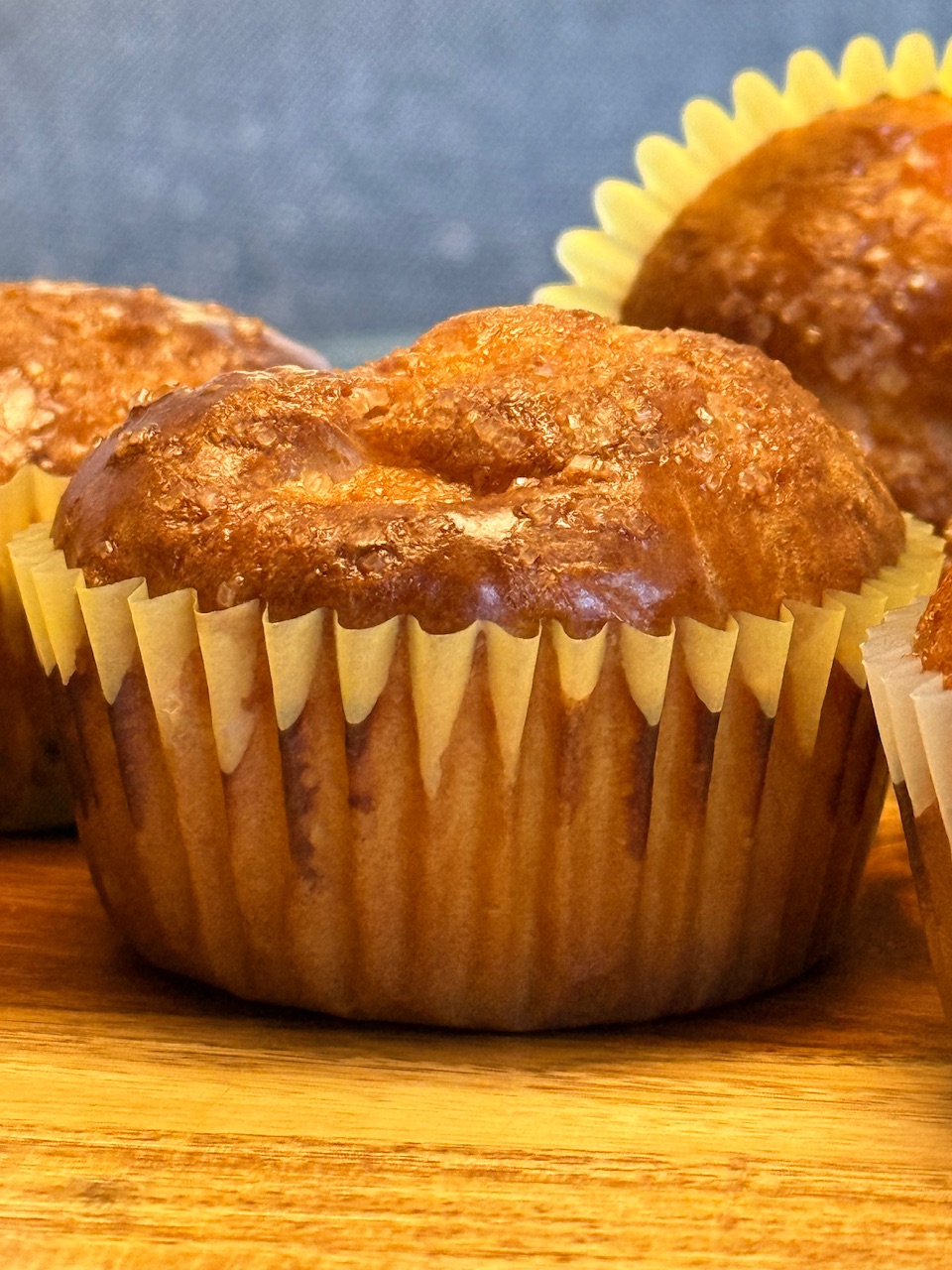
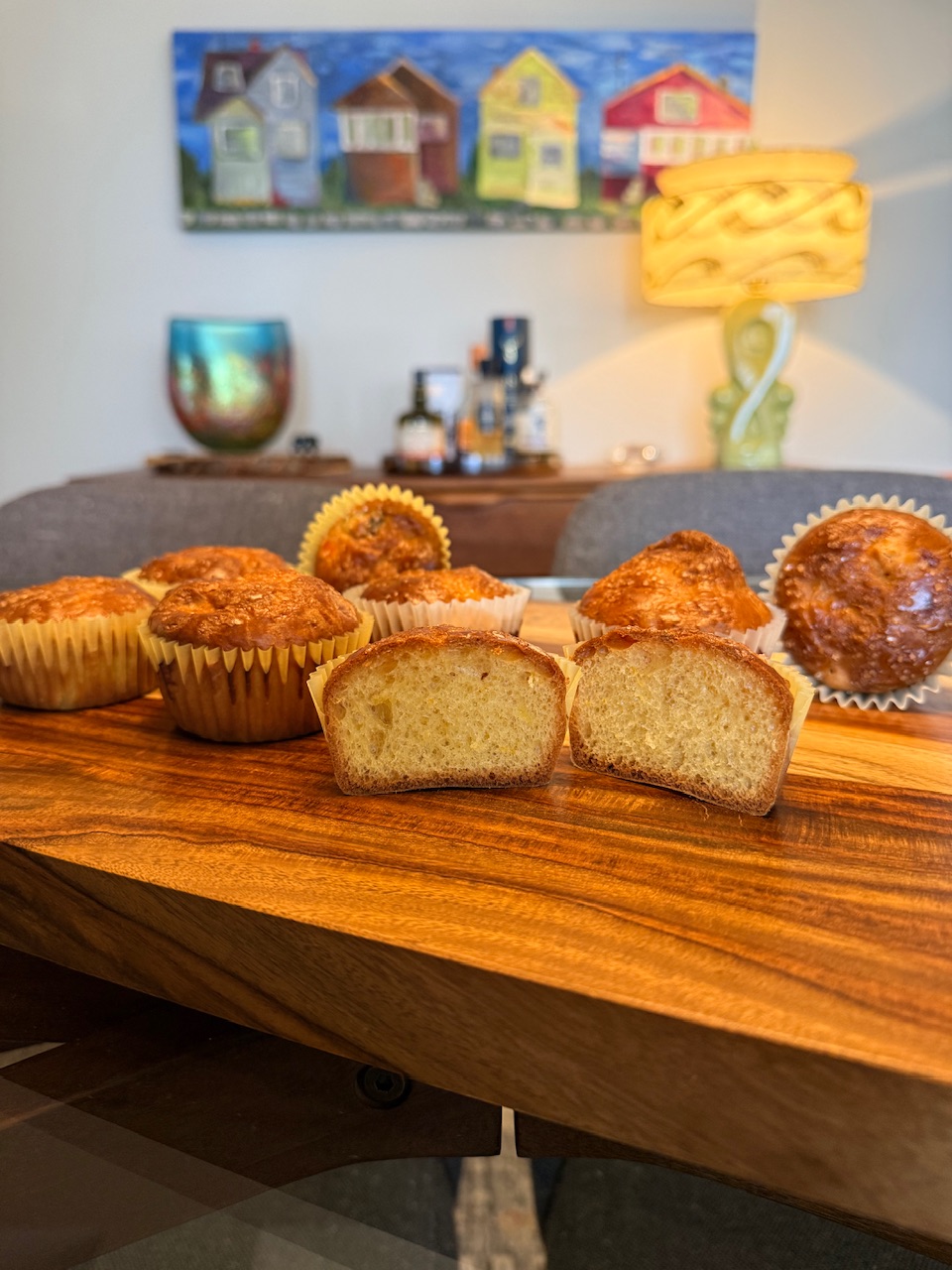
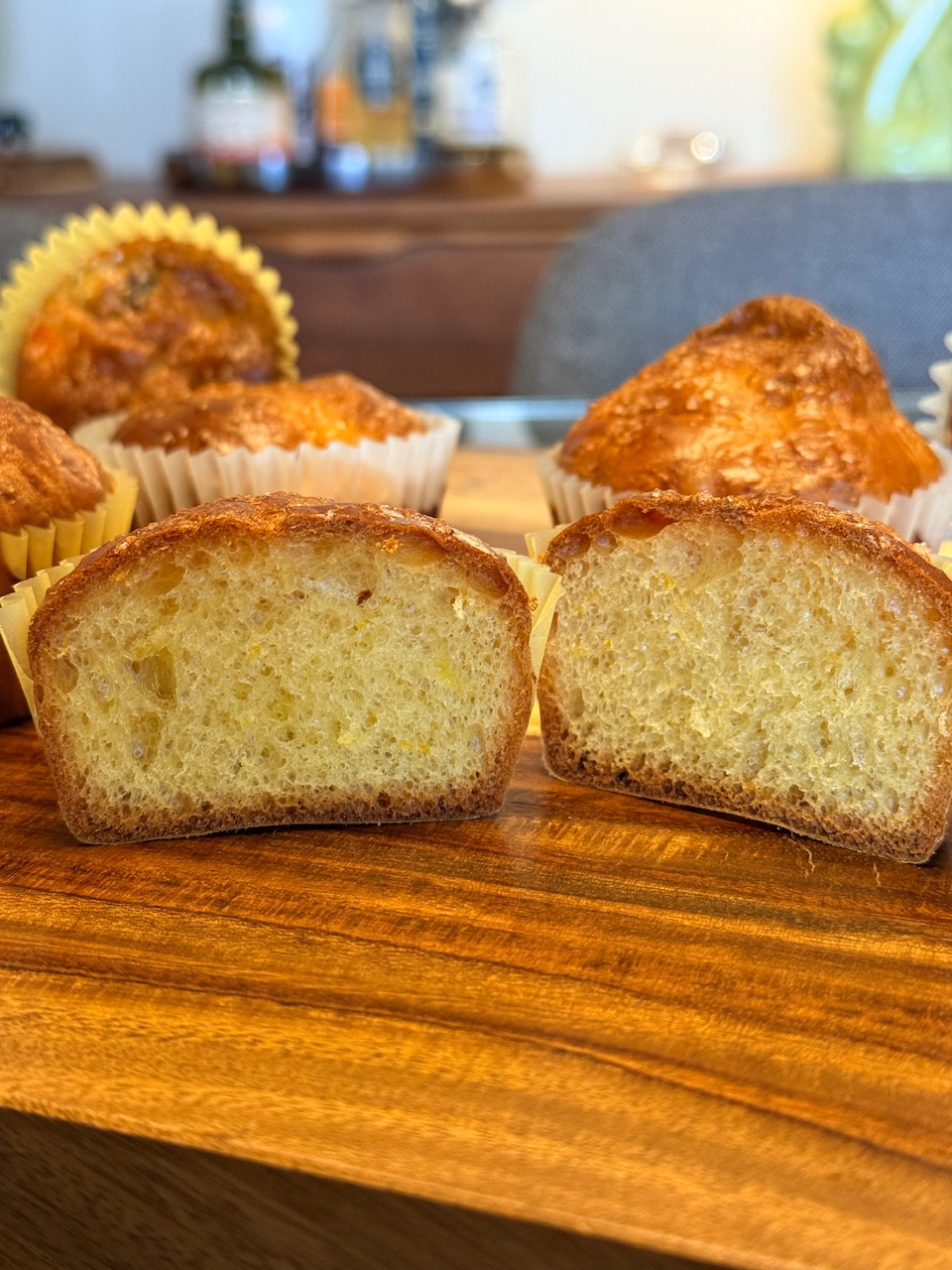
Makes 1 large loaf (950 g) + 250 g extra dough
Prep Time 4 days
Cook Time 50-55 minutes
Two day starter preparation - Day 0 to Day 1
Aim to get starter active enough that it triples when fed 1:0.5:1 in 4 hours at 82ºF.
To deal with the overnight, create a stiff sweet starter by feeding the starter 1:0.5:1 and sugar 50% of total water and ferment at 78ºF. This will reduce the LAB population and slow the starter to last overnight and not be too acidic.
10 g starter, 5 g water, 3.75 g sugar and 10 g flour overnight (about 12 hours 77°F) and then follow with 3 feeds at 1:0.5:1. 12 g starter:6 g water:12 g flour twice then the final starter feed needs to have a final total weight of >30 g in order to make enough levain.
Final levain build 30 g starter, 15 g water and 30 g flour.
I believe we are targeting a pH of around 4.1 for the final levain.
Ingredients
First dough:
- Levain 75 g of 50% hydration
- 120 g water
- 240 g high gluten flour (~15% protein)
- 75 g sugar (superfine/caster) (see note)
- 75 g butter , softened not melted and cut into several pieces (put in proofing box)
- 55 g egg yolks (about 4)
Second dough:
- 60 g high gluten flour (15% protein)
- 2 g diastatic malt
- 70 g sugar (superfine/caster)
- 95 g egg yolks (about 5 or 6) divided to be added gradually
- 1/2 teaspoon salt (~3 grams) on 2nd day can add the salt to the aromatic mix
- All of the aromatic mix (recipe follows)
- 95 g butter, softened (not melted, put in proofing box) and cut into several pieces, divided to be added ¾ and finally ¼
- 120 g rehydrated white raisins, weigh after soaking
- 60 g candied orange , diced small
- 30 g candied citron , diced small
Candied Peel (Orange or Lemon)
Aromatic mix:
- 30 g honey
- 1 vanilla bean
- half lemon grated
- half orange grated
Egg wash (optional)
- One egg beaten with a splash of milk or cold water
- Instructions
- Two day starter preparation - Day 0 to Day 1
- Aim to get starter active enough that it easily triples when fed 1:0.5:1 in 4 hours at 82ºF.
- Do three feeds of 10 g starter 5 g water 10 g high protein flour on day 0 starting at 7 am
- To deal with the overnight, create a stiff sweet starter by feeding the starter 1:0.5:1 and sugar 50% of total water and ferment at 77ºF. This will reduce the LAB population and slow the starter to last overnight and not be too acidic.
- 7 pm 10 g starter, 5 g water, 3.75 g sugar and 10 g flour overnight (about 12 hours 77°F)
- Then Day 1 (three feeds prior to levain build)
- 2 feeds at 1:0.5:1. 12 g starter:6 g water:12 g flour twice. The final starter feed needs to have a final total weight of >30 g in order to make enough levain.
- Around 3 pm do final levain build 30 g starter, 15 g water and 30 g flour.
- I believe we are targeting a pH of around 4.1 for the final levain.
- ***Day 1***. Overview and Preparation
- Overview of day 1: prepare aromatic mixture (will sit for 24 hours until day 2), soak raisins (soaks for 1.5 hours), refresh levain/starter 3 times throughout morning and afternoon (example, 8AM, noon, and 3PM), and then make first dough in evening (45 mins to 1 hour active time)
- Mix Aromatic Blend and Soak Raisins
- To begin, mix ingredients for aromatic blend in a small jar, cover and let sit for 24 hours
- Rehydrate raisins by soaking them in bowl of hot water for 30 minutes, rinse well and then soak again in warm water for 1 hours. Drain and then place on paper towel and let sit overnight. Make sure to re-weigh raisins once hydrated because you will need less as they will weigh more.
- Refreshing your Starter/Levain (Liquid)
- Ensure that your levain has been refreshed enough times so that it is very active prior to Day 0. See above Day 0-1 starter prep. The 50% hydration starter fermented at 82°F should triple within 4 hours.
- Mixing the First Dough (Primo Impasto) - evening of day 1. Once the levain has tripled, place it in the freezer to cool prior to use about 10-15 mins. Refrigerate the mixing bowl, and everything else other than the butter prior to mixing to help ensure a cool dough temperature during mixing below 78°F.
- When ready to mix the first dough, add the levain to the bowl of a stand mixer, along with flour and water. (For Ankarsrum Assistent start with dough hook, adding sugar at the start with the levain, water and flour before adding butter.)
- Mix for 10 to 15 minutes, then add sugar and then softened butter in several pieces. (For the Ankarsrum Assistent fold the butter into the dough in the bowl one at a time to speed butter incorporation using the dough hook or kneading butter in by hand.)
- Only after butter is completely incorporated add the 4 egg yolks in several stages switching to the roller and paddle.
- Ensure that the dough temperature stays under 26 degrees C (78F). If it goes higher, place dough in freezer for 10 minutes (remember this for second dough too)
- Mix for 25 minutes until you get a silky smooth elastic dough. The dough should achieve a great windowpane.
- Bulk Rise of First Dough (12 hours/overnight)
- Place dough in large container (three times the size of the dough, I should use the 2nd largest bowl), cover, and let rise at 28/30 C (82 to 86F) for 12 hours. The target pH of the primo impasto is > 5.0 I believe.
- Once tripled in size, place in freezer for 30 mins to cool. This will help avoid overheating during the long mixing of secondo impasto
- ***Day 2***. Overview and Mixing of Second Dough (Secondo Impasto)
- Overview: Make dough two (45 mins), form loaves/rest dough (1 hour), let loaves rise (6 to 9 hours), and bake (35 mins to 1 hour, depending on liner size, see note)
- To begin, consider placing dough/bowl/hook/flour/fruit in refrigerator (everything except the butter) while measuring ingredients for dough two or even overnight.
- When ready to proceed, add flour and diastatic malt to the day 1 dough and mix at slow speed then medium for 15 minutes using the hook. (For the Ankarsrum Assistent start with first dough, flour, diastatic malt in the bowl and use the dough hook. Once most of the flour is incorporated gradually add the sugar. Once the dough starts to loosen after all the sugar has been added, switch to the paddle and roller then add half the egg yolks)
- Slowly incorporate sugar
- Afterwards, add half the egg yolks, salt, and aromatic blend.
- Knead until smooth and homogenous
- Add 70 grams (about 3/4) of the softened butter, mix well, and then the rest of the yolks.
- Knead well until smooth and strong so that the dough passes a great windowpane. Then add the remaining butter. After the butter is well incorporated finally add the raisins/tart cherries, and the candied peel mixing until well distributated.
- Bulk Rise of Second Dough
- Remove from machine onto buttered counter to weigh and divide if needed. Let stand in buttered or oiled covered bowl for 30 minutes. For my formula, I will aim for 950 g main dough and the rest divided into about 8-10 small boules and placed directly into muffin cups in muffins pans to proof. These will bake before the panettone.
- Remove dough from bowl onto buttered counter. Form into tight boule. and let sit uncovered on counter for 15-30 minutes. Tighten the boule and then transfer to the form.
- https://youtu.be/NgVxXgaey_A?si=l7yIJbl2_k8_glx_ shaping video.
Final Rise of Second Dough
Once the dough is in the form, pass the skewers through the form near the bottom of the form to save time and reduce risk of the panettone collapsing once out of the oven. Place these just above the bottom of the form, placing them much higher can result in them tearing through the panettone a bit when it is hanging upside down. If the skewers aren’t that sharp, snip two small holes with scissors where you want to start skewering the mold.
- Allow dough to rise in liners placed on a on baking sheet, covered by plastic wrap at a temp of 28 to 30 C (82 F to 86F) for 6 to 9 hours. You may leave the covered dough inside the oven (turned off!) with the oven light turned on for warmth if you have a cool kitchen.
- The dough should rise within 1 inch of top of mold at the edge where it meets the form. If it rises more than that, you risk getting a mushroom shaped panettone, which is not considered ideal. Preheat the oven and uncover the panettone at this point.
Preparing to Bake
- In the meantime, before baking, pre-heat the oven to 165 C (330 °F) and allow panettone to form skin by uncovering for 15 to 20 minutes prior to baking.
- Just before baking, brush the top with an egg wash and sprinkle the decorating sugar on top. Next cut a cross on top of panettone prior to baking and add a chunk of butter to the center
Bake loaves
330°F for 50 mins or so.
- Center should read 94 C (201 F) when done (takes about 50 to 55 minutes for 1 kg dough; see note for baking according to size). After 50 mins at 330°F I dropped the temperature to 315°F and baked for a final 5 mins.
- If baking panettini in muffin pans, have them baked before the panettone to avoid opening the oven during baking. Bake 330°F for 25-30 mins.
Invert and cooling of loaves
- To cool, immediately invert loaves and hang upside down inside a deep pot. The loaves stick to the side of liners so they should not fall out. When serving, it is okay to cut right through paper and peel it off).
- After completely cooled for 10-12 hours, place the loaves in plastic/cellophane bags. Before wrapping in plastic, you must wait 10 to 12 hours for loaves to completely cool. (to reduce risk of mold, consider spraying inside of bags with pure food grade alcohol and dry out completely before using)
- Panettone is best eaten at least 5 days after baking as the flavors continue to develop after baked.
My primo impasto had a pH of 5.22 this morning and had more than quadrupled in size. I was a bit concerned that its pH would have been less than 5.0 based on the rise, but it wasn’t.
I’ll try to let it sit for a few days before slicing it. At least I have the panettini to eat until then.
The panettini are delicious and the crumb is so light!
Benny
- Benito's Blog
- Log in or register to post comments
I have yet to read the process lol. I try each time but it’s just not in me to do it. I shall enjoy from afar. c😊
I wouldn’t read the process unless I was seriously interested in baking panettone either Caroline. It is pretty long and involved.
Benny
Your efforts were surely worth it. I wish I had one with my coffee this morning. 🙏
Thank you Caroline, you know I’d share some with you if I could.
Benny
Yay Benito! Very nice panettone! I am sure it will be delicious! And, I hope you enjoyed the process. Each bake is a new experiment.
—Sue
Thank you Sue, you are the source of so much inspiration for me to try to bake panettone. I doubt I will ever achieve what you have, but I will enjoy the ones I do bake.
Benny
All I know about panettone I learned on TFL, so I was wondering if hanging it inside a pot would trap moisture. Was there a specific reason for this, or just convenience?
I’m the same Moe, everything I’d learned about panettone I’ve learned here. The reason I use the pot to hang the panettone in to cool is that it is safe and protected in the pot from bumps. Also I’ve read that some unlucky bakers have had the tops fall off their panettone once they were inverted. If the top were to fall off while in the pot at least it would still be clean and edible.
Benny
Well done Benny - that looks like a really good panettone - better than what I remember of your previous efforts.
Scanning quickly through your write up reminds of what a complex process it is.
Lance
Thank you very much Lance, it is certainly the most technically challenging bread baking that I have attempted. There are improvements to be made I’m certain, however, I am quite happy with this overall. I doubt it will have that open crumb that is so popular at the moment, but I’m OK with that. At least I believe I have found a method that doesn’t require me to maintain a pasta madre in order to make panettone.
Benny
They all look perfect! Kudos!
Thank you Will, I appreciate it.
Benny
Oops
Kudos to you for such a successful bake. I don’t have the patience to try baking panettone but who knows maybe if I ever retire 🙄. I love the flavor combos…it’s right up my alley.
Ian
Having more free time is useful for attempting panettone that’s for sure. I’m sure you would make marvelous panettone if you wanted to Ian. They are worth the effort for sure.
Benny
That being said, regarding a new community bake. I still think a theme of naturally levianed enriched dough could be achievable for all skill and knowledge levels. Challah at the beginners level, babka for the intimidate folks, and finally panettone for the advanced master class.
Those are great ideas Will. How long has it been since the last community bake?
The last one was the flat bread bake.
I missed that one while I was traveling.
As always fun and learning were the hallmarks.
Smile..
I showed much greater patience than usual and waited more than a week after baking this panettone before I sliced into it and ate a wedge. I really enjoyed the flavour. I’m wondering if I need to build even more gluten and or also increase the amount of VWG that I use in the flour. I am getting a bit more of the vertically aligned alveoli that seems so in vogue at the moment but I think the crumb could still be more shreddable than it is.
Anyhow, it was a successful bake for the third try with this formula and I think there was a bit of improvement which is nice to see.
Hi,
Looking at your recipe vs a scaled down version of Giorilli, I can see that yours is very close, as you said. I included Giorilli in the ternary analysis I did recently, and it fell into what I’d call the “traditional” type of recipe. Quite high in sugar on the first impasto, but balanced overall. The sugar helps control acidity in the first dough, which is good. You might consider trying a different recipe, just to compare results. Make sure you super develop the gluten in the first step of the first impasto and the second impasto. It’s much harder to to do later. Here’s a chart of Giorilli and others balanced between %Hu, %Cu, and the new one I am calling %Nu for enrichment index. Food for thought.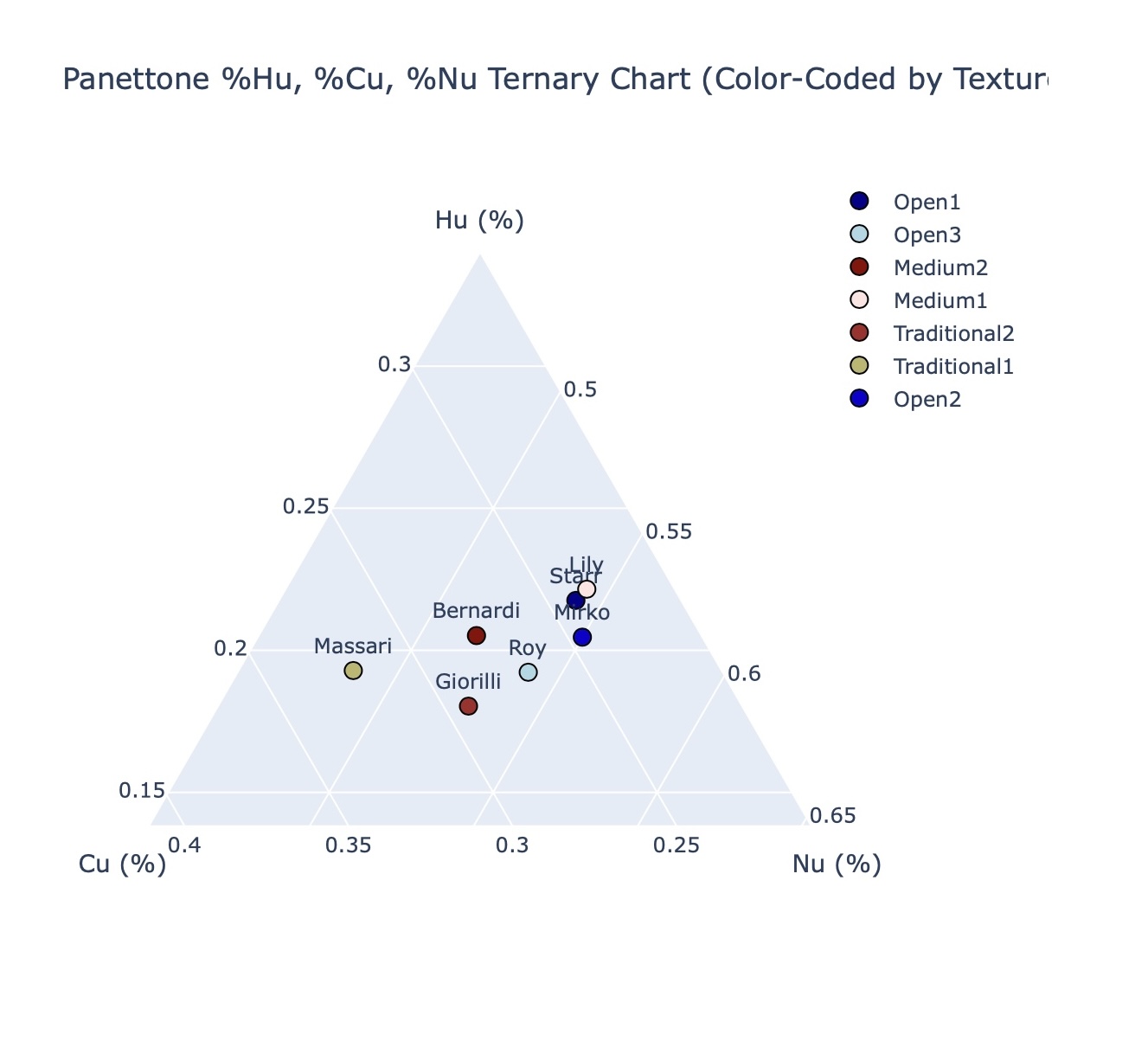
Hi Sue, thank you for your comments and sharing your information. What are Nu%, Cu%, and Hu%?
Using an Ankarsrum Assistent for mixing is very challenging in the beginning of both the Primo and Secondo Impastos. The dough is very low hydration, so I have to use the dough hook. I’m never sure when I can stop this stage of mixing. Because it is low hydration, it seems stronger than it perhaps is. I also have to resort to adding the butter by hand with this low hydration dough with the Ankarsrum Assistent, where I can easily add butter in more typical hydration-enriched doughs.
I’m wondering what formulas might be somewhat higher hydration at the start of each of the primo and secondo that you might suggest?
Benny
Hi Benny,
These are benchmark values the Thomas Teffri-Chambelland developed for evaluating panettone recipes in his book Sourdough Panettone and Viennoiserie. It’s a very popular book, because it showcases a number of well-known panettone bakes and their recipes, and also gives foundational information on the process. His Universal Method evaluates the solid and water quantities in all the ingredients, and provides %Hu (universal hydration percentage). This is calculated as total water quantity/total weight (without inclusions) X 100. Sugar is first evaluated as %Su (percentage of sugar in the dough excluding the extra ingredients). %Su is the total quantity of sugar/total weight x 100. This is used to calculate his most important value, %Cu, the total sugar concentration excluding extra ingredients. This is calculated as Cu = Su/Hu x 100.
Chambelland believes the Cu is the best indicator for sugar, as sugar concentration relates to osmotic stress and suppression of LAB fermentation. This is important to understand for controlling the development of acidity in the primo impasto.
I have a calculator for this, and I believe that Michael has made one as well. It’s pretty easy to set up in a spreadsheet or a program of any sort.
I recently became more interested in the balance of enrichment factors in the dough, and I am now also calculating what I call %Nu, or enrichment index. I felt that just studying sugar and hydration wasn’t enough, and that we should also look at enrichment, and its balance in the dough. On my ternary chart, Hu, Cu and Nu values are compared between several recipes, with values increasing as you move toward the origin points.
It’s given me some insights that I want to apply for my next series of bakes.
As for recipe suggestions, there is of course Roy’s recipe, which is in Chambelland’s book, and so many others. Quentin Berthonneau, who just competed in the Panettone World Cup with the third place-winning Australian team (and who also formerly worked at the EIDB with Chambelland), publishes his personal panettone recipe on his instagram profile. Italian Gourmet published a compilation of all the recipes from the 2023 World Cup teams, and I can recommend the Italian team’s chocolate panettone from that book!
Regards, Sue
Hi Sue, thank you for your detailed explanation, it helps a lot. I’ll have a look at alternate formulas for the future.
Happy Baking.
Benny